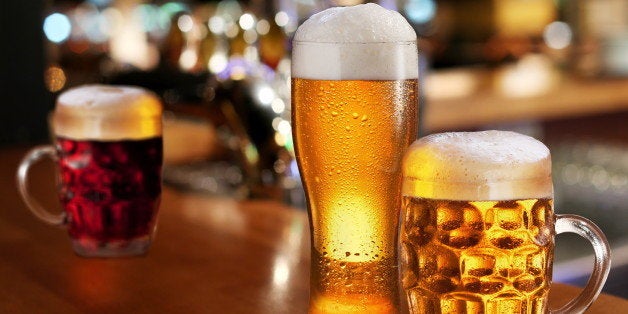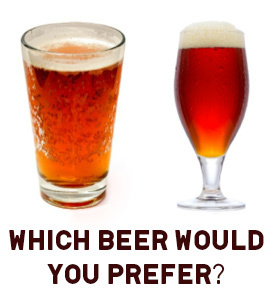
When Bubbles Are A Red Flag In Your Craft Beer
Ever see carbonation bubbles on the inside of your glass at a restaurant? Alert: Send your glass back immediately. It's dirty.
Dishes, cutlery and glassware sometimes have residue that we simply cannot see. When bubbles cling to the sides of a beer glass, that is a huge, red flag that residual food and often soap (yuck!) are present in your glass, mixing with the beer you're imbibing and entering your body.
Appreciation of any food or beverage should be free from detergent (yikes!), food residue, oils, lipstick (ew!) and other unseemly sensory assaults.
Rather than sticking to a dirty glass, carbonation should be working its ingredient magic: producing that aromatic enhancing collar of foam, livening up beer's mouthfeel, drying out a beer's finish as a flavor balancing element and scrubing our tongue, preparing it for the next bite of food or sip of beer.
According to Mike V. Sardina, Ruler of the Underworld (Assistant Executive Officer) at Societe Brewing Company in San Diego, California:
"Why should the attention to cleanliness stop once the brewing is finished? A beer-clean glass is the only way to properly respect beer that is born from clean practices and processes. A clean glass ensures that the sight, aroma and taste of the beer is exactly what our brewers intended it to be. You don't see a world-class chef allow his or her meals to be served on a dirty plate, so why should a brewer allow his or her beer to be served in a dirty glass."
Whether you're serving beer professionally or at home, it's easy to check that your glasses are properly clean. Here are the three methods outlined in the Brewers Association Draught Beer Quality Manual:
"1.Sheeting Test: Dip the glass in water. If the glass is clean, water evenly coats the glass when lifted out of the water. If the glass still has an invisible film, water will break up into droplets on the inside surface.
2.Salt Test: Salt sprinkled on the interior of a wet glass will adhere evenly to the clean surface, but will not adhere to the parts that still contain a greasy film. Poorly cleaned glasses show an uneven distribution of salt.
3.Lacing Test: Fill the glass with beer. If the glass is clean, foam will adhere to the inside of the glass in parallel rings after each sip, forming a lacing pattern. If not properly cleaned, foam will adhere in a random pattern, or may not adhere at all."
When you see bubbles clinging to the inside of your glass, send it back to the manager for more cleaning. Beer lovers should not be subjected to consuming any drinker's previous affairs no matter how intimate we like to get with our craft beer!
Julia Herz is publisher of CraftBeer.com, a Certified Cicerone®, BJCP beer judge, and craft beer program director for the Brewers Association. Follow Julia Herz on Twitter: www.twitter.com/HerzMuses
